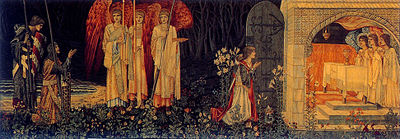Open Standards have been somewhat of a holy grail for some time now. Interoperability and vendor-independence, the IT industries’ equivalent of eternal life, are the prize for those who find the grail that are Open Standards. This conquest took decades, has spawned many different definitions of what people might call an Open Standard, but has also left many of the seekers with a much better understanding of what it is we really seek.
Some of the more interesting definitions are
- The Open Standards definition in the European Interoperability Framework, which had some good success in achieving interoperability and has consequently come under heavy criticism from Microsoft and its interest groups.
- The Open Standards definition by Bruce Perens, which includes practice recommendations, based on the understanding that a definition is worthless without practice to uphold it.
- The definition of an Open Standard adopted in Denmark as part of motion B 103 of the Danish Parliament
But there are also many others. Based on practical experience, the understanding of Open Standards continued evolving in various fora, including the Dynamic Coalition on Open Standards (DCOS) at the United Nations Internet Governance Forum, where governments, industry and civil society discuss Open Standards in an open and inclusive way. There are also the recent discussions around the European Interoperability Framework, the controversy around ISO approval of MS-OOXML, the various discussions on interoperability in almost any country, the effects of lacking interoperability on procurement cost, including at WIPO, and so on.
Allow me to share with you five criteria that have emerged from dialog between stakeholders, and constitute a concise and balanced definition of what an Open Standard should be. Such a standard is
- subject to full public assessment and use without constraints in a manner equally available to all parties;
- without any components or extensions that have dependencies on formats or protocols that do not meet the definition of an Open Standard themselves;
- free from legal or technical clauses that limit its utilisation by any party or in any business model;
- managed and further developed independently of any single vendor in a process open to the equal participation of competitors and third parties;
- available in multiple complete implementations by competing vendors, or as a complete implementation equally available to all parties.
It is obviously impossible for a new format or protocol to meet the fifth criteria, so there will have to be a grace period for new protocols of formats until it is fully applied. There also needs to be active and continuous checking of Open Standards against this definition to prevent abuse or false labelling, but this would be true for any definition. In balance I do consider the five points presented above to be rather solid.
One of the first projects to adopt this definition is Science, Education and Learning in Freedom (SELF), including the Internet Societies in the Netherlands and Bulgaria, various Universities, some NGOs (including FSFE) and is funded by the European Union in its framework programmes.
Ideally we should all come to some common understanding of what constitutes an Open Standard. Considering that there are some parties that base their business model on lack of Open Standards and have a commercial interest in falsely declaring proprietary formats as Open Standards, that is unrealistic.
But if the majority of politics, industry and society at large came to a common understanding on the issue, that would probably be sufficient. So I hope that we’ll be able to continue this discussion further at the IGF in Rio.

